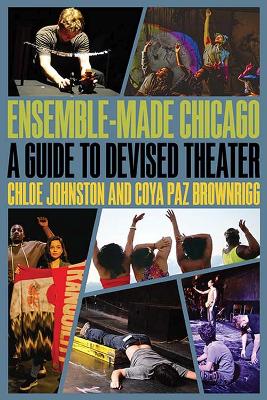Second to None: Chicago Stories
1 total work
Ensemble-Made Chicago brings together the work of a wide range of Chicago theater companies to share strategies for cocreating theatrical performance as an ensemble: About Face Youth Theater, Albany Park Theater Project, Barrel of Monkeys, Every house has a door, FEMelanin, 500 Clown, Free Street Theater, Honey Pot Performance, Lookingglass Theater, the Neo-Futurists, Second City, Teatro Luna, the Southside Ignoramus Quartet, and the Young Fugitives.
The book's introduction offers a fascinating overview of the history of cocreated theater in Chicago, defined by the authors as theater that breaks down the traditional roles of writer, director, and performer in favor of a more egalitarian approach in which all participants contribute to the creation of original material. Each chapter offers a short history of a Chicago company, followed by detailed exercises that have been developed and used by that company to build ensemble and generate performances. It pays special attention to the ways the fight for social justice has shaped the development of this aesthetic in Chicago. Companies included in the book range in age from two to fifty years, represent different Chicago neighborhoods, and represent both the storefront tradition and established cultural institutions.
Assembled from interviews and firsthand observations, the book is written in a lively and accessible style and will serve as an invaluable guide for students and practitioners alike, as well as an important archive of Chicago's vibrant ensemble traditions. Readers will find new creative methods to enrich their own practice and push their work in new directions.
The book's introduction offers a fascinating overview of the history of cocreated theater in Chicago, defined by the authors as theater that breaks down the traditional roles of writer, director, and performer in favor of a more egalitarian approach in which all participants contribute to the creation of original material. Each chapter offers a short history of a Chicago company, followed by detailed exercises that have been developed and used by that company to build ensemble and generate performances. It pays special attention to the ways the fight for social justice has shaped the development of this aesthetic in Chicago. Companies included in the book range in age from two to fifty years, represent different Chicago neighborhoods, and represent both the storefront tradition and established cultural institutions.
Assembled from interviews and firsthand observations, the book is written in a lively and accessible style and will serve as an invaluable guide for students and practitioners alike, as well as an important archive of Chicago's vibrant ensemble traditions. Readers will find new creative methods to enrich their own practice and push their work in new directions.
